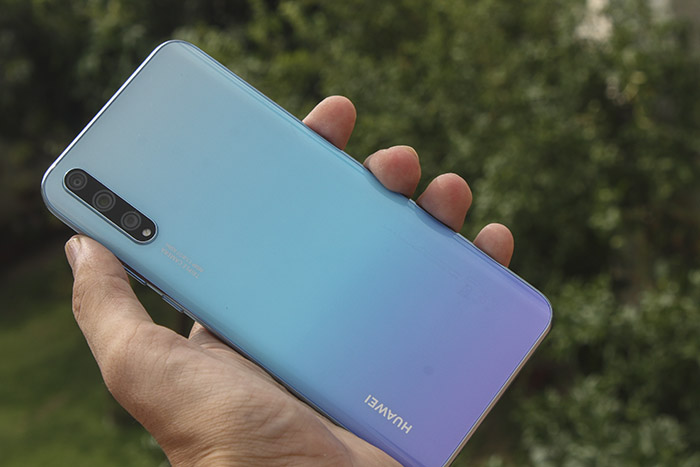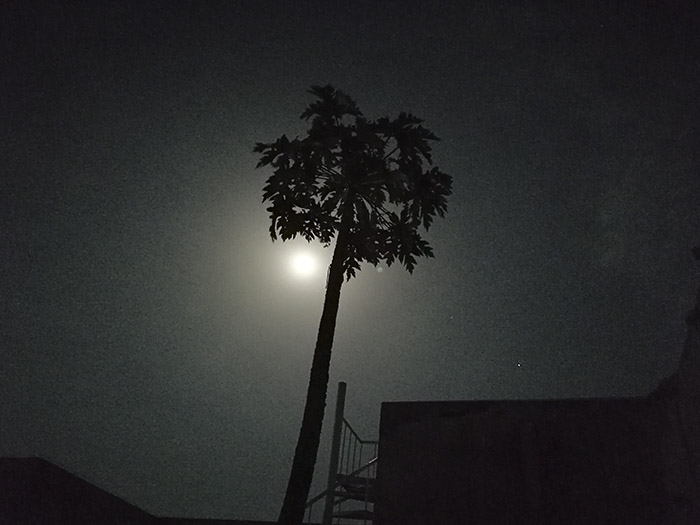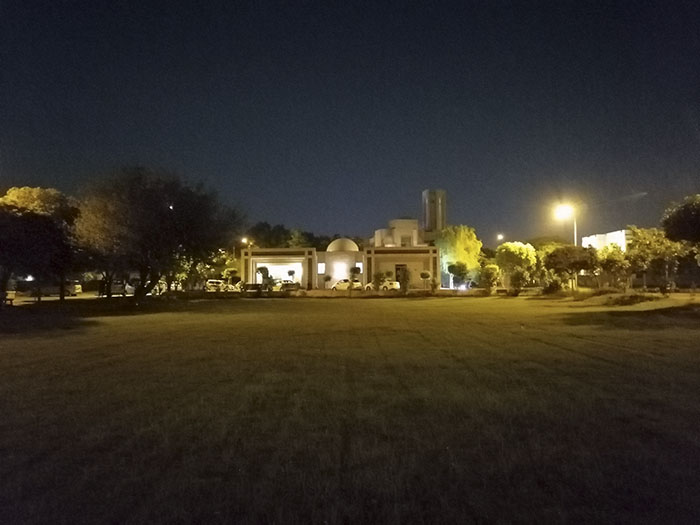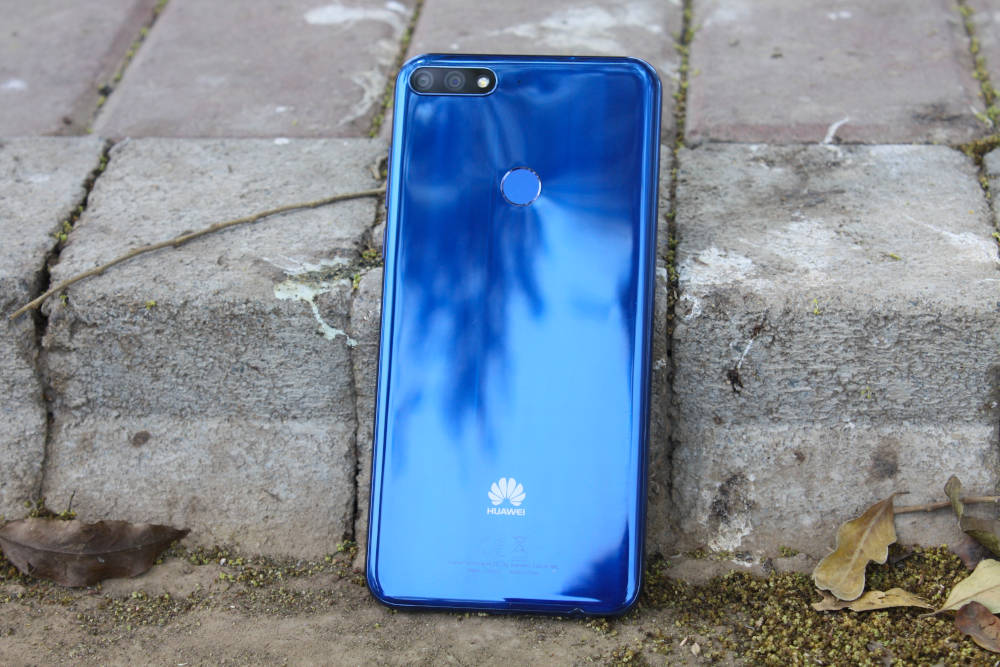For years, Huawei has dominated the mid-range and entry-level smartphone market across the globe with affordable offerings, and even amid the battle for survival, thanks to the U.S. ban, the company is not shying away from launching new devices for its users. Huawei Y8p is the new iteration in the company’s growing Y-series and holds the highest order among its recently launched smartphones, Huawei Y6p and Huawei Y7p.
It is a device that comes with many bells and whistles and falls right into the middle of the mid-range category. The first thing that struck me odd about this smartphone was the weirdly irrelevant name of its color, “Breathing Crystal” which didn’t do a good job at hinting that the phone looks bluish-purple. The second thing was the presence of an older chipset that the Chinese smartphone giant introduced at the end of 2018 and is being used in several dozen Huawei and Honor phones some of which are Huawei Y9s, Huawei Y9 Prime 2019 and Honor 9X. Though features like always-on display and in-display fingerprint scanner make Huawei Y8p a serious attraction but do the old processor and an affordable price tag of Rs. 37,999 will result in a watered-down performance or a testament to Huawei’s resilience? Let’s find out:
Simple yet elegant design
Huawei is not breaking any new ground with the design of its new smartphone; what we get is the company’s tried and tested design language with columnar camera setup which has prevailed since the birth of Huawei P20 Pro, was extended in its successor P30 Pro and since then has been spotted in several mid-range devices all enveloped in the similar bluish color. But at the same time, Huawei Y8p looks appealing and gives an aura of a refined product that we have come to expect from the smartphone company.


The plastic body will not come as a surprise to anyone looking to buy a mid-range smartphone in this price category. A slim shiny frame sits between the glass panel at the front and a plastic back that curves around the edges (curved 3D edges as Huawei likes to call it) which for the most part was the sole reason why I managed to keep an excellent grip on the smartphone.
Apart from the body, the simplicity of the vertically stacked cameras also managed to draw us into admiration even if we have already seen the said design repeated again and again in the last two years. The cameras are slightly protruded, creating a small bump at the back but the phone will not wobble if you place it on a flat surface.
The phone comes in two colors: Breathing Crystal or Midnight Black. The latter, which I reviewed, is striking to look at and reminds us of the time when we first saw P30 Pro last year. The color is quite vibrant to look at and shows a purplish tint when you tilt it in certain lighting conditions.
The position of controls is exactly what we’ve come to expect from midrange smartphones i.e. a power key and volume toggle at the right and a hybrid SIM card tray at the left. At the bottom, there is a USB-C charging port that is accompanied by a single firing speaker. The music lovers don’t have to panic as there is a headphone jack present at the top of the smartphone. Overall, the keys on the device didn’t cause any problems and performed as they were intended for.
Huawei Y8p is not unreasonably big if we consider what is the new normal for smartphone sizes this year and the phone is easier to hold and use than many other mid-range devices in the market. The weight is slightly on the lighter side (163g) and the phone’s beauty is preserved by the presence of an in-display fingerprint scanner. All in all, Huawei Y8p is a simple-looking yet stunning phone which pushes just the right buttons of the design-centric user.
OLED display; a rare sight in mid-range phones
Huawei made quite a bold choice when it comes to the display of Y8p and gave us 6.3 inches of an OLED screen with 2400 x 1080 (FHD) resolution. The colors on the screen are beautiful and vibrant, even the phone icons stand out owing to better contrast. The settings area has the usual display options for the users like the smart screen resolution, Dark mode, eye comfort, color temperature, etc.


As expected from an OLED display, we get quite crisp colors, and consuming multimedia on the smartphone is an absolute delight. The viewing angles of the device are also not something to be troubled over and you can get to experience deep blacks and brighter white colors on the screen. The phone is bright enough to be comfortably used indoors as well as outdoors but you may not get the optimum experience if you plan to watch a movie under the sunlight.
I, like many other smartphone users, have become quite accustomed to the dewdrop notch that is present at the top of the display but what irks me is the existence of quite-so visible bezels that stand out especially due to the vibrant screen. You may ask, is that a deal-breaker? Absolutely not because realistically it is a small sacrifice for the stunning OLED display.
The in-display fingerprint reader is also positioned at the expected place; near to the chin. In short, Huawei Y8p not just matches but excels in the display category as compared to other smartphones that lie in the same price range.
Performance; old chipset runs the show
While many new mid-range smartphones are flaunting gaming-centric chipset, Huawei has taken the decision to power its new device with an almost two-year-old Kirin 710F octa-core chipset which is accompanied by Mali G51 MP4, 6GB RAM and 128GB of internal storage which can be extended by up to 256GB through only Huawei’s nano microSD card.
On the Antutu benchmark, Huawei Y8p didn’t manage to outdo its other siblings equipped with the same chipset including the Huawei Y9s and Honor 9X, and scored 155291 against their respective 18134 and 178183 scores.
Now that we have covered the theoretical basics, let’s get down to the real-world performance of the smartphone. In everyday use, Huawei Y8p operates quite smoothly and you get to see the company’s stellar phone optimization skill that brings the most out of the hardware and software without any help from a major 3rd party interference.
So, it will be wise to pay no heed to the lower benchmark ranking of the phone because, in the entirety of our usage, we never once experienced a lag or stutter even while multitasking.
Now moving onto address the elephant in the room; the lack of Google services. As a potential user, you should know that the phone features a free version of the Android 10 operating system which has been blended nicely with Huawei’s EMUI 10.1 software skin. You also get no Google Play store or any of its other applications and you’ll have to rely on the company’s own app store.
For gaming enthusiasts, this may serve as a big shock because Huawei’s App Gallery does not offer too many options when it comes to graphics-rich games and they will be stuck with less attractive gaming options that require lower graphics settings. For all its shortcomings, we were able to download and play Asphalt 9 and Free Fire from the app store. We found the frame rate at 30fps, as calculated by the Game Bench, with a 97% stability on a wifi connection.
For games like PUBG and Call of Duty, we had to abandon the App Gallery for the quite unique Petal search engine app which can locate almost anything including the APKs of the two mobile games. We did manage to install the APKs of both PUBG and Call of Duty on the smartphone but were only able to play the former at high frame rates and HD graphics. The latter, however, required Google Play which eventually led to a great defeat.
While we are on the subject of Google services, you have to remember that Google Maps will also not run on the smartphone and it will hinder the performance of many apps that rely on this service like Uber, Careem, etc. You can always rely on other third-party apps for navigation purposes but you will need to keep your expectations low. We also get the web versions of YouTube and Gmail integrated with the browser which can somehow give a native feeling but lacks a number of features exclusive to the app.
Huawei’s App Gallery currently has nearly 1.3 million apps and is the 3rd largest app store in the smartphone world but it has a long way to go before it can go toe-to-toe with Google’s Play store. Although the Petal search and app finder can handle most of the burnt from the U.S. ban by locating and installing APKs of unavailable apps, in truthfulness, a single tap installation from the App Gallery is the right way to serve the community at large.
Coming to one of the most attractive features of the smartphone; the in-display fingerprint scanner and facial unlock work without a hassle and are quite snappier. The latter can easily detect the face even in nearly dark situations provided you have enabled the ‘low light compensation’ option which uses screen light to detect the facial features.
Summing it up, you get great everyday performance with Huawei Y8p, and with the newly upgraded GPU Turbo 3.0, the smartphone covers more than 20 popular games. Sadly, you do not get to play most of the graphic-intense games that we once took for granted on our phones.
Lasting battery life
In our journey of smartphone testing, not once Huawei made it to the top performers in our smartphone battery ranking but things have started to improve for the Chinese smartphone giant in 2020. Huawei Y8p is equipped with a 4000mAh battery which can play videos for full 14 hours and 25 mins on a single charge. Huawei Y7p, on the other hand, has the same battery capacity and played a single video on a loop for 10 hours and 51 minutes during our test.
Checkout best mobile phones with the longest battery life
For charging the phone, we get a 10W charger right out of the box which can power up the phone from 0 to 100% in 2 hours and 7 mins.


Our 4-hour battery test which ran on mobile data showed that the phone drained 51% of juice on various resource-hungry apps where the maximum battery was interestingly drained by WhatsApp video call (10%).
Not a bad camera


Huawei Y8p is shipped with a triple camera setup at the back featuring a 48MP main lens, an 8MP wide-angle lens, and lastly a 2MP lens for depth. For selfies, there is a 16MP shooter at the front that lives inside the dew-drop notch. I was quite impressed with the camera app present on the smartphone especially as the name of camera mode appeared whenever I changed from one mode to another. The only downside of the app was that it closes in the outdoors when the temperature is too high.
Photos taken with the main lens are binned down to 12MP. Almost all of the images taken by the smartphone especially during daylight turned out well. My only complaint is that you have to look hard to see any change between the high-resolution 48MP images and the standard 12MP images. On a closer look, you can see that the former carries better details levels but you also get more noise in the image.


Overall, you will see near-natural colors, solid exposure, and better color saturation in all three modes; Standard, AI, and HDR. In the first look, you may even find it hard to see the difference in the images taken in these three modes during daylight, especially on a smaller mobile phone screen. But, if you pixel peeps the photo, you will notice that AI can enhance the washed-out corners present in the standard image and address the noisy parts of the image. As a result, the image gets to have better color contrast and control of exposure levels in AI mode.


The HDR mode is supposed to easily tackle the white and darker areas but in Huawei Y8p, it struggles to do so and you can see that both the standard mode and HDR mode produce similar images when we tried to take a picture against the shining sun. I will recommend that you ditch the HDR mode in favor of Pro mode that can handle such situations a lot better and at the same time can shoot 48MP images.


The low-light result of the camera is also quite acceptable in the standard mode especially if you consider the following images taken with only the moon as my light source. In the HDR mode, the phone has tried to contain the light source which is resulting in more darkness in the image. The night mode, however, has managed to capture the light source without dispersing the light across the image, and as a result, we get a much sharper photograph.
However, both standard and night mode show quite noticeable noise in the images.


The phone has no zoom lens and we have to rely on the software-enabled zoom feature which doesn’t do a particularly impressive job. The shots I took at 2x, 4x, and 6x are softer and you can easily identify loss of detail while comparing them to a 1x image. I suggest that you take a high-resolution image and then crop it later instead of relying on the camera’s zoom feature.


2x Zoom 

6x Zoom
I was not really impressed with the wide-angle camera of the smartphone as it definitely had some exposure as well as dynamic range issues. As you can see in the images, we get fewer details and more vivid and darker colors in wide-angle shots as compared to the true colors in standard mode.


The aperture mode takes quite decent bokeh shots, the colors, although vivid, are quite soft as compared to the bokeh images taken in the standard mode which are more sharper in look and carry more details. The edge detection in both images is good and we get just the right amount of blur in the background.




Aperture Mode 

Aperture Mode
The phone also takes pretty good portrait shots and though the edge detection is a little uneven, the result is not unsatisfactory in the least. The selfies taken with the smartphone are good but not impressive. The flash can help capture good details of the subject in pitch-dark situations.


Portrait Mode
Huawei Y8p also shoots 1080p videos from the rear as well as front camera. The videos have good details and we get the natural colors of the subject images and a good overall result. If you are shooting with your phone, remember that it has no stabilization and your shaking hands will be reflective in the final product.
The device also allows us to shoot 120fps and 480fps slow-mo videos. At 480fps, you can only shoot the sequence for 10 seconds and you will have to disable automatic movement detection for shooting such a video. For capturing a distant subject, it is also preferable that you start recording manually.
For slow-mo videos, you will probably have to start recording manually from the app than waiting for the camera to detect motion. It captures 120fps and 480fps videos but the latter can only shoot by up to 10 seconds. All in, we get good colors and the overall slow-mo performance is quite desirable.
All things considered, the smartphone’s camera performs quite amicably and covers all the basic features that we have come to expect from a mid-range device. You can watch our detailed video camera review below:
If you want to take look at the high res (original images), you can find here the Google drive link
Final Verdict
Even amid turbulent times, the Chinese smartphone giant has managed to create an amazing mid-range smartphone that not only looks and feels good, can also efficiently perform all its daily tasks and then some. The battery, though smaller as compared to the hype train of 5000mAh battery, lasts for a long time and the camera has not let us down by delivering what we expected from the device. So, should you buy this smartphone? The answer lies in whether you want to live without Google Play store and are comfortable with relying on Huawei’s App Gallery; ultimately the choice is yours.
Alternatives
If you are looking for better battery performance than what Huawei Y8p can offer, then you should consider choosing Vivo S1 Pro priced at Rs. 40,000. For better camera results, both Redmi Note 9s and Huawei Nova 7i are available for Rs. 41,000 and Rs. 42,000 respectively are better alternatives.















